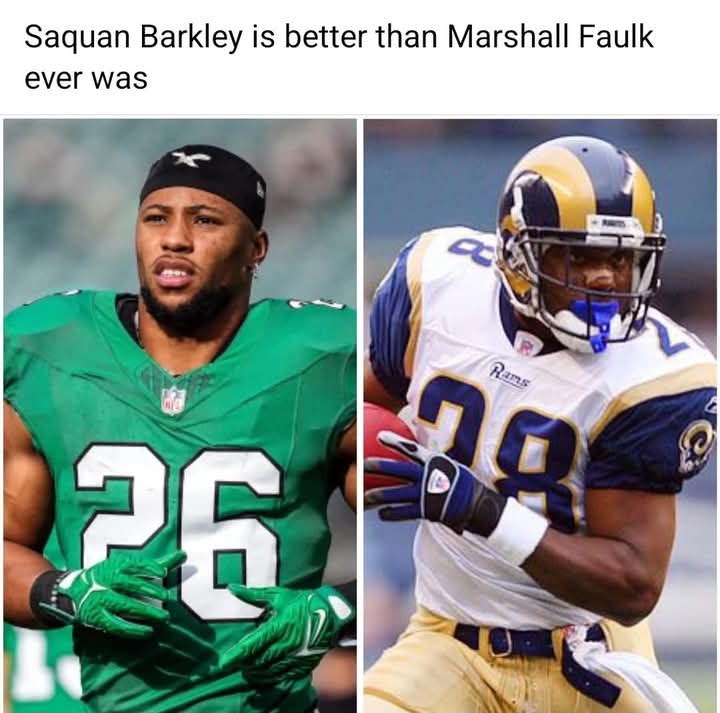Bold Claim: Saquon Barkley Surpassing Marshall Faulk — A New Standard at Running Back?
In the ever-heated debates of NFL greatness, comparing players across eras is often tricky—but that hasn’t stopped analysts and fans alike from making bold claims. One such statement that’s gaining traction: Saquon Barkley may be surpassing Marshall Faulk, a Hall of Famer and one of the most complete running backs the league has ever seen. While it’s a claim that will ignite passionate debate, there are compelling arguments suggesting that Barkley is redefining what it means to be a modern running back—and in some ways, elevating the position beyond where Faulk left it.
Marshall Faulk, of course, is a legend. A central figure in the “Greatest Show on Turf” Rams offense, Faulk revolutionized the dual-threat running back role. With over 19,000 yards from scrimmage and 136 total touchdowns in his career, his combination of vision, hands, and route-running was ahead of its time. Faulk wasn’t just a running back—he was a matchup nightmare.
Enter Saquon Barkley: a physical specimen, blending track-star explosiveness with a power back’s strength and a receiver’s finesse. Drafted second overall by the New York Giants in 2018, Barkley made an immediate impact. His rookie year was historic, with over 2,000 yards from scrimmage and 15 touchdowns, earning him Offensive Rookie of the Year honors. Injuries have disrupted parts of his career, but when healthy, Barkley has consistently shown flashes of transcendent ability.
What separates Barkley from many backs—including Faulk—is his raw athletic ceiling. His lower-body power, elite burst, and ability to break tackles at any moment give him a home-run threat on every snap. While Faulk was graceful and precise, Barkley is explosive and punishing. Barkley’s ability to turn a broken play into a 50-yard gain, combined with his receiving talent, makes him a unique weapon in today’s faster, more complex NFL.
Then there’s the context: Barkley has produced in an era that is arguably more difficult for running backs. Today’s defenses are faster, more specialized, and more focused on stopping versatile players like him. Unlike Faulk, Barkley hasn’t had the benefit of playing in a legendary offense with a Hall of Fame quarterback and wide receivers to take pressure off. Instead, he’s often been the focal point of the Giants’ offense, facing stacked boxes and limited support.
In terms of versatility, Barkley has consistently lined up out wide, in the slot, and run routes like a wide receiver—much like Faulk did in his prime. But Barkley’s blend of power and agility may give him an edge in overall athleticism. Where Faulk excelled in finesse, Barkley often dominates with brute force and raw speed.
Of course, career longevity and consistency still matter. Faulk’s Hall of Fame resume is polished and complete, while Barkley’s is still unfolding. Injuries have slowed him, and he has yet to experience the postseason success that often defines legacy. But in terms of pure ability, physical gifts, and impact potential, the argument that Barkley is surpassing Faulk isn’t as far-fetched as it might seem.
If Barkley stays healthy and continues to evolve, he could very well set a new standard for what an elite running back looks like in the modern NFL. And when it’s all said and done, he might not just match Faulk—he might surpass him.
Bold Claim: Saquon Barkley Surpassing Marshall Faulk — A New Standard at Running Back?
